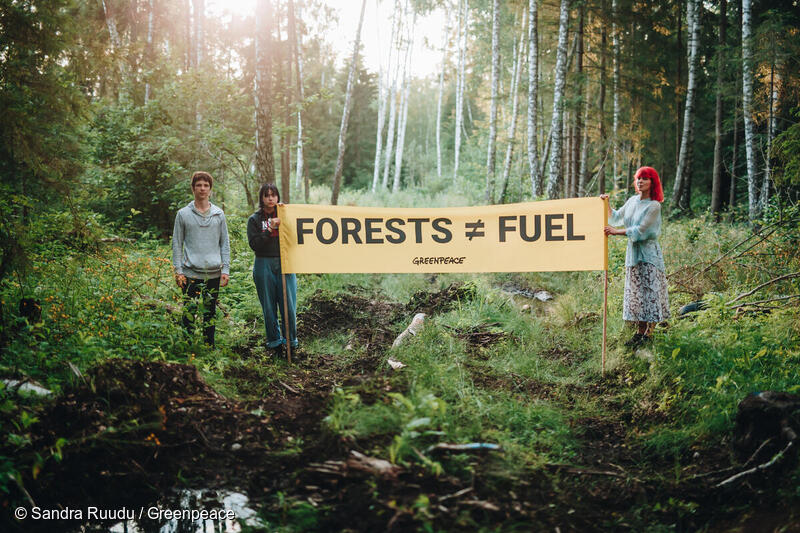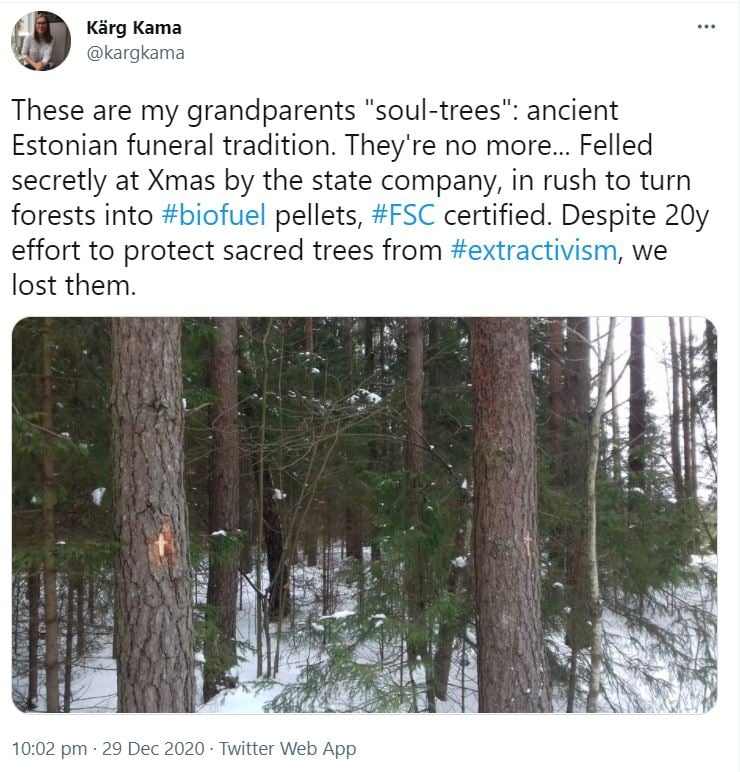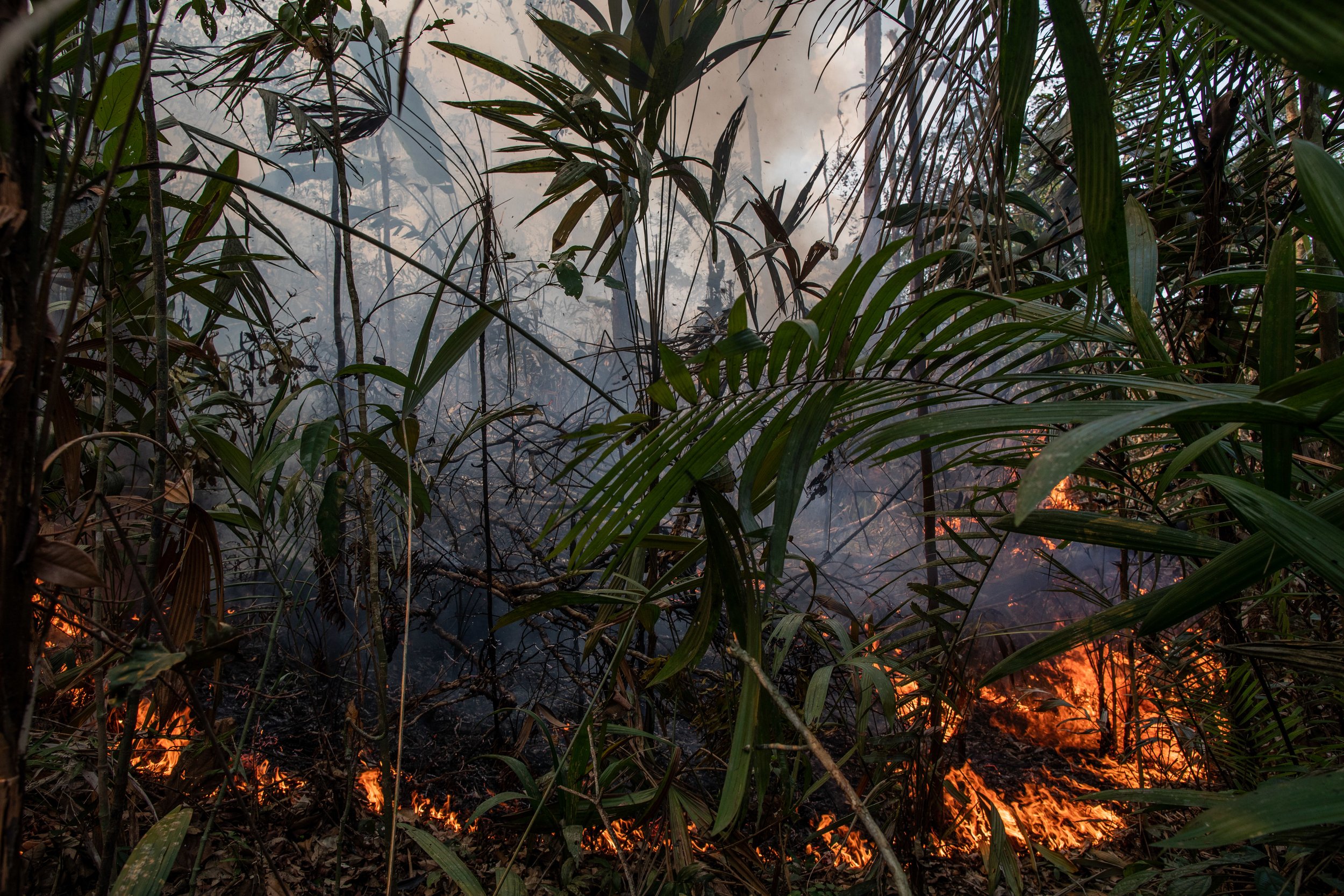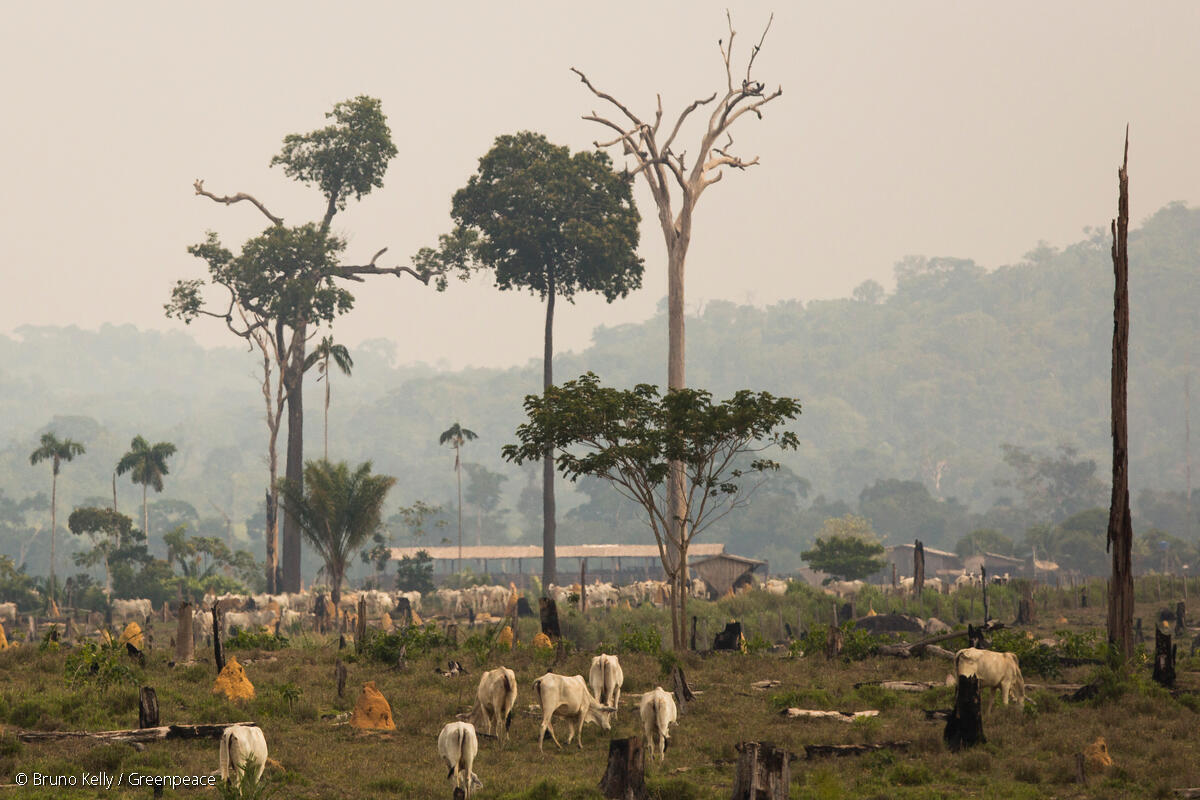
Have you heard about the latest fake climate solutions that our policy makers are pushing? Burning wood as ‘renewable energy’ is being sold to us as a sustainable practice. In reality, it destroys priceless ecosystems and often fails to reduce carbon emissions. Greenpeace Netherlands has commissioned a new report that shows how much damage is being done in the forests of Estonia, one of the EU’s top wood pellet producers.
Wood pellet production is being accelerated by renewable energy subsidies from the Netherlands and other EU countries. The report reviewed wood pellet production against Dutch sustainability criteria – some of the most comprehensive in the EU – and found that even these stricter rules had failed. They failed to protect critical habitats like high conservation value forests and peatlands, or stop the intensification of logging in Estonia, threatening biodiversity and the good climate work of the forests. This new evidence shows once more why it is critical that the EU stop including the burning of forests as renewable energy.
But this is not a stand-alone case. The increasing demand for wood for energy production is putting pressure on forests worldwide. We’ve seen heartbreaking stories not only from Estonia, but also from Romania, Canada and the US.
Here are 5 reasons why burning trees for energy is a bad idea:
- It’s bad for the climate
The EU tries to sell energy made by burning any kind of wood as ‘renewable’, and even treats it as ‘CO2-neutral’. But don’t be fooled. In the short term, burning trees for energy emits more carbon dioxide than coal or gas. It is literally fuelling the climate and biodiversity crisis. It will take decades or even centuries before forests are regrown (if ever, we have no guarantee for that) and absorb the same amount of CO2 that was emitted when it was originally burned. We don’t have that kind of time. The climate and biodiversity crises are happening now. Emissions reductions in the next decade are crucial.
- It’s bad for forests and wildlife
Forests are crucial in the fight against the climate and nature crises. They help stabilise the climate by absorbing CO2 and are home to most land-based species and biodiversity. If we protect nature, then nature protects us. We rely on intact and healthy ecosystems for our own health and wellbeing, shielding us from disease outbreaks like Covid-19.
To protect ourselves, we should be protecting the forests we have left and restore the ones we have lost. Instead, forests in the EU are under heavy pressure. It has been estimated that 79% of EU forest habitats that should be protected are threatened by forestry activities. The argument used by companies and countries is that new trees are being planted when wood is harvested to burn for energy. But it simply doesn’t work like that. Forests are much more than a bunch of trees, and a new plantation is not the same as an old and diverse forest, and it doesn’t sustain the same richness of species.
- It’s bad for people’s health and culture
Cutting down forests and burning the wood does not only make the climate and biodiversity crises worse, it also drives air pollution. It creates extremely hazardous fine particles in the air, which can be harmful to our health, especially for children, the elderly and people with lung problems. Wood burning is now the biggest source of these particles in the EU, even above those from road transport. In 2018, fine particulate matter pollution was responsible for about 379,000 premature deaths in the (then) EU-28.
In addition to this, many forests have cultural meaning. Take for example the case in Estonia where ‘cross trees’ are an exceptional type of sacred natural object that is connected to the funeral custom of carving crosses on a tree on the way to the cemetery to commemorate the deceased. These trees become the ‘soul-trees’ of people we have lost. But even though it is forbidden, some of them end up as wood pellets.

- It’s bad for truly renewable energy
The burning of wood makes up a massive 35% of what the EU counts as its renewable energy mix. The targets set by the EU for renewable energy, and the policies set by national governments to meet those targets, are the main drivers of the growing practice of burning wood for energy. So while the climate and biodiversity crises are actually worsened by these policies, member states allocate billions of public funds in subsidies to encourage the burning of trees. Those should instead be allocated to truly zero-emissions renewable energy technologies like solar and wind.
- It’s a bad use of public funds
Over €6.5 billion in subsidies were paid out by 15 European governments in 2017 alone for the burning of wood for energy. This is your tax money that should be supporting clean and green energy. But instead, it’s destroying forests, driving climate change, threatening biodiversity and worsening air pollution. We can think of a million good ways to spend this huge amount of money, burning our last European forests isn’t one of them.
What should happen?
We need to #StopFakeRenewables, before we have lost all of our precious forests. We are asking the EU to put a stop to counting wood extracted directly from forests and burned for energy as “renewable energy”.



